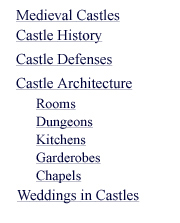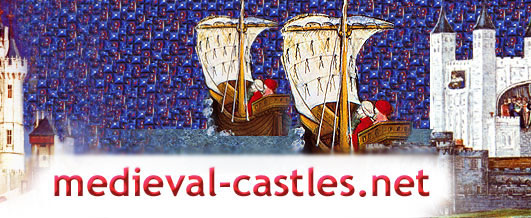Castle Architecture
Castle Kitchens
Medieval kitchens were placed
outside the Great Hall to fire safety. Spits roasting meat
and large, iron cauldrons bubbling with soups and stews were
all part of the kitchen's daily routine. Lambs, cattle, pigs,
and fowl were tethered or penned nearby, some castles kept
a pond stocked with fish, and cooking herbs would be grown
in nearby gardens. Castle kitchens could be large enough to
roast up to three whole oxen at a time!
Water would be supplied by a well, but
castles during the later Middle Ages began to pipe water right
into the kithcen area. Utensils and whatever dishes the lord
might possess would be washed in large stone sinks.
Breakfast in the Middle Ages was usually
a simple meal of bread and water. Dinner would be served between
10 a.m. and noon and feature several courses. Dinner, especially
for celebratory feasts, would demand large quantities of food
be prepared. At the marriage of Henry III's daughter, sixty
cattle were slaughtered and prepared as the main course for
the meal.
|










